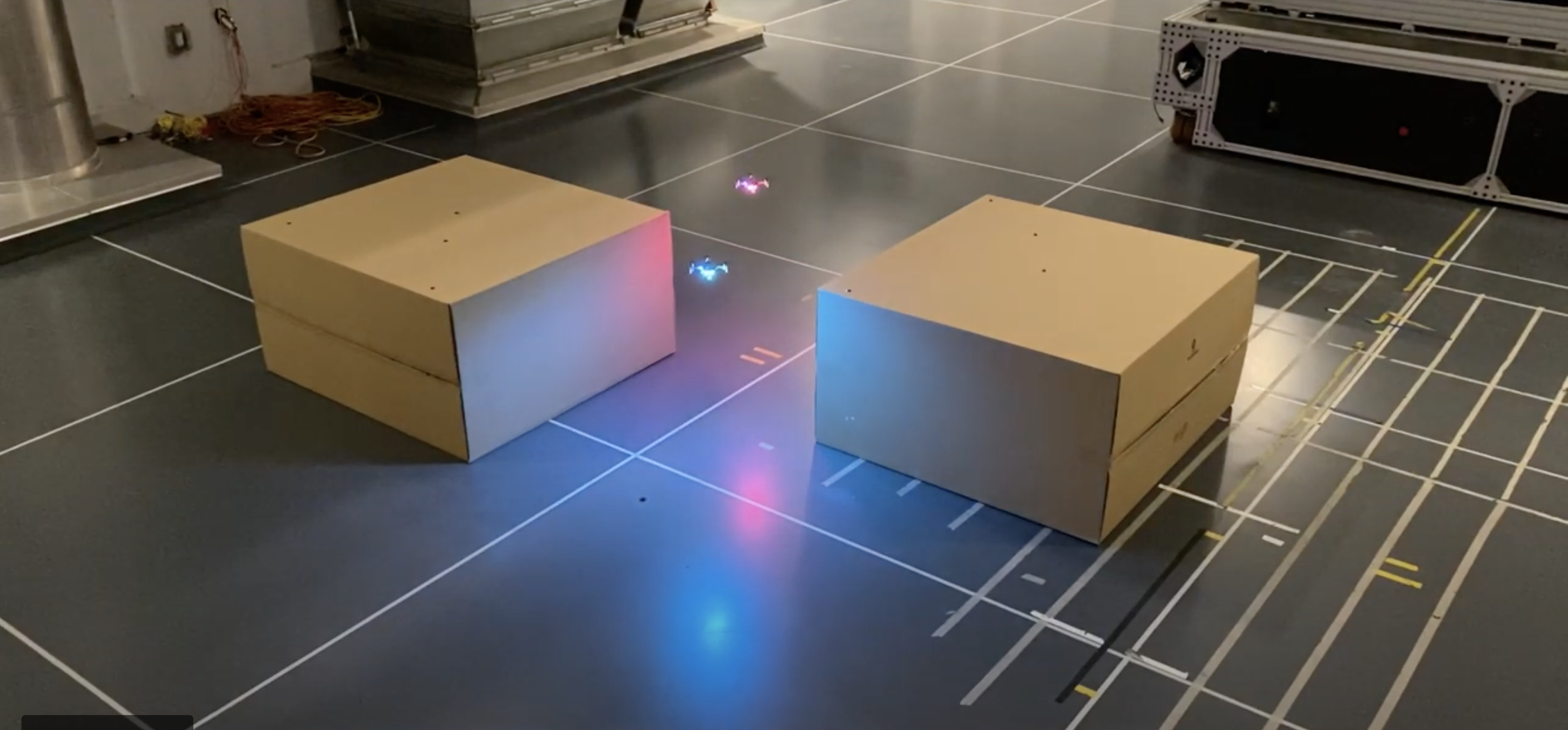Engineers at Caltech have designed a new data-driven method to control the movement of multiple robots through cluttered, unmapped spaces, so they do not run into one another.
Multi-robot motion coordination is a fundamental robotics problem with wide-ranging applications that range from urban search and rescue to the control of fleets of self-driving cars to formation-flying in cluttered environments. Two key challenges make multi-robot coordination difficult: first, robots moving in new environments must make split-second decisions about their trajectories despite having incomplete data about their future path; second, the presence of larger numbers of robots in an environment makes their interactions increasingly complex (and more prone to collisions).
To overcome these challenges, Soon-Jo Chung, Bren Professor of Aerospace, and Yisong Yue, professor of computing and mathematical sciences and TCCI® affiliated faculty member, along with Caltech graduate student Benjamin Rivière (MS ’18), postdoctoral scholar Wolfgang Hönig, and graduate student Guanya Shi, developed a multi-robot motion-planning algorithm called “Global-to-Local Safe Autonomy Synthesis,” or GLAS, which imitates a complete-information planner with only local information, and “Neural-Swarm,” a swarm-tracking controller augmented to learn complex aerodynamic interactions in close-proximity flight.
